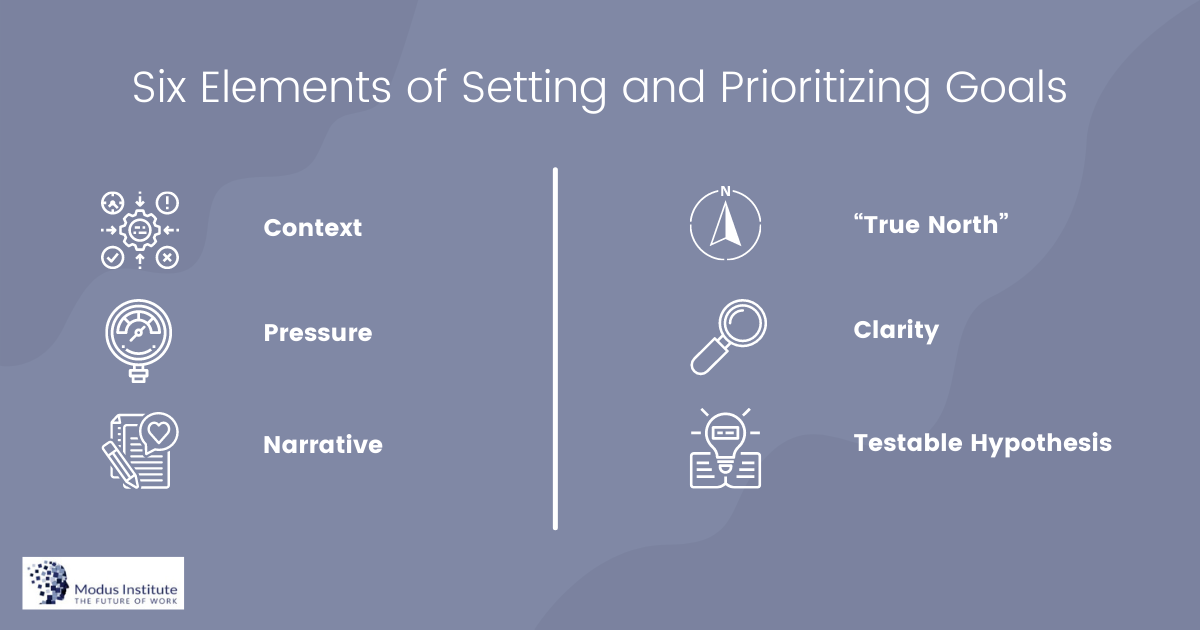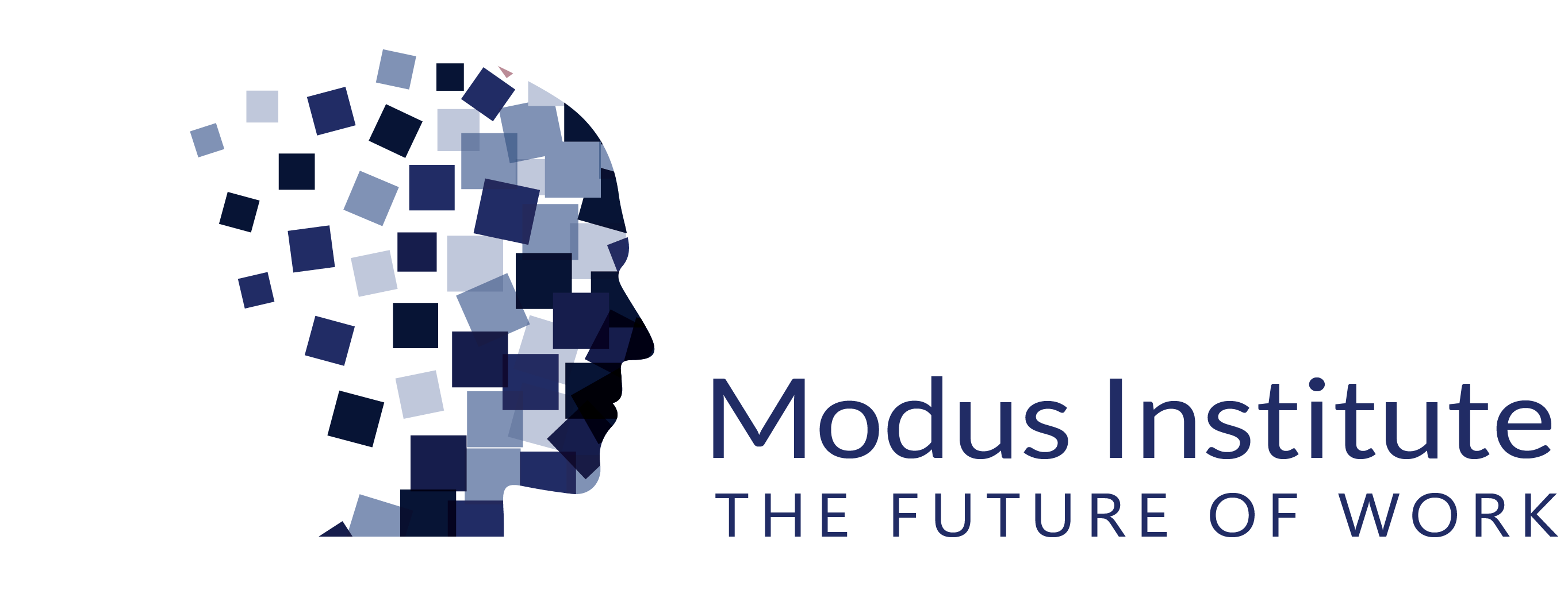Goal Hacking: The Modus Way of Prioritizing Goals
Nov 15
/
Jim Benson
Every endeavor we undertake begins with a goal. A goal starts as an idea, then morphs into a desire and, with the appropriate action, can then become a realized goal. Ideas are vague, desires are inspiring, and a goal is an actionable inspiration.
However, setting intentions is not enough. The realization of goals requires thoughtful prioritization. Without clear priorities, people tend to be chaotic in their work process and get lost between undefined objectives.
How we are prioritizing goals translates to our work approach, accuracy of estimation, and ability to process them.
However, setting intentions is not enough. The realization of goals requires thoughtful prioritization. Without clear priorities, people tend to be chaotic in their work process and get lost between undefined objectives.
How we are prioritizing goals translates to our work approach, accuracy of estimation, and ability to process them.
Before focusing on prioritizing goals, we need to take a look at both prioritization and goals as separate elements and comprehend how they correlate.

A Few Thoughts on Prioritization
The cry for prioritization comes in many forms:
In the end, they are all looking for the same thing: clarity of action.
Can I be certain that what I do next will yield good results and not get me into trouble?We worry about doing the wrong thing, wasting time, and failure.
We worry about these more than ever because we have more options than ever. We could be doing almost any action right now. Everything has a very high opportunity cost.
Putting together our class on personal prioritization was an eye-opener for me personally. There are so many layers of pain piled on top of us. Too much work. Ill-defined work. Un-finishable work. Work with unknown value. Work that requires the help of people who are incentivized not to help.
And we want to prioritize the right goal, but we are overloaded with demands. Some we can meet, many we cannot. But we’re expected to complete those demands by other people who are also distracted, overloaded, and frustrated.
Prioritizing goals suddenly become more than just stack ranking or declaring something the most important.
Prioritizing goals implies grasping what you could be doing, why it is important, who it benefits, and what a good job looks like. Then you have to weigh all those demands and see how they fit together. See their context.
And truly understand how and when to endeavor on the right goal.
That is prioritization. Anything less is just CYA.
- Just tell me what to do!
- Which of these is most important to you?
- I thought it was a good idea at the time!
In the end, they are all looking for the same thing: clarity of action.
Can I be certain that what I do next will yield good results and not get me into trouble?We worry about doing the wrong thing, wasting time, and failure.
We worry about these more than ever because we have more options than ever. We could be doing almost any action right now. Everything has a very high opportunity cost.
Putting together our class on personal prioritization was an eye-opener for me personally. There are so many layers of pain piled on top of us. Too much work. Ill-defined work. Un-finishable work. Work with unknown value. Work that requires the help of people who are incentivized not to help.
And we want to prioritize the right goal, but we are overloaded with demands. Some we can meet, many we cannot. But we’re expected to complete those demands by other people who are also distracted, overloaded, and frustrated.
Prioritizing goals suddenly become more than just stack ranking or declaring something the most important.
Prioritizing goals implies grasping what you could be doing, why it is important, who it benefits, and what a good job looks like. Then you have to weigh all those demands and see how they fit together. See their context.
And truly understand how and when to endeavor on the right goal.
That is prioritization. Anything less is just CYA.
Goal Talk
A goal is not a plan. A goal should not be overly specific. And the goal should be deeper than a simple metric.
But a goal is a constraint and an important one. Imagine that, an inspiring constraint.
Most importantly, goals let us know what we should be doing. Without them, we simply don’t know the appropriate way to act (See Role Definition).
Goals focus us in a direction, give us a general end-state, and allow maximum flexibility for getting there.
Most importantly, goals let us know what we should be doing. Without them, we simply don’t know the appropriate way to act (See Role Definition).
Goals focus us in a direction, give us a general end-state, and allow maximum flexibility for getting there.
I will run the Boston Marathon next year.
We improve the work with our customers and learn what makes them happy.
We will build 2,000 units of affordable housing.
We will have a dinner party in July.
Those are goals. They set the context. Beyond this, they can be refined and prioritized with any number of tools, but right now, let’s just examine them at a high level.
Six Elements of Setting and Prioritizing Goals
What do goals give us? Setting and prioritizing goals provides us with a sense of purpose. Introducing a few key elements can foster a better understanding of the science behind them and the path to successful goal planning.

Context
Our goals set the boundaries for what we will achieve. By doing so, they help us focus on that achievement. At the time of goal setting, it is often dangerous to over-define the context. The tighter the definition of the context, the tighter the constraint and, therefore, the fewer the possible successful outcomes are available to you.
Pressure
Two of the examples above feature timeboxes, additional constraints that can serve both to inspire or defeat you. Inspire by letting you know how much effort you need to expend between now and then to be successful. Defeat if the timebox is overly aggressive. One year of marathon training or planning a July event months in advance might be comfortable, daunting, or unrealistic. “Stretch goals” are often intended to exert positive pressure but end up causing harm. Apply pressure with care.
Narrative
We are beginning to build a narrative. As we employ our goals, we are then forced to interrogate them to get a deeper understanding of the narrative. What problem are we trying to solve? Who wants this really? When are we going to find time for this extra work? What’s the least amount we can do to achieve a good or even wonderful outcome? What good will come of this? How much will it cost? And so on.
It is crucial during the implementation of any goal that the people involved regularly discuss what the priorities are and why, otherwise the “work” (the tasks of completing the goal) will become more important than the goal itself. This loss of focus is what causes a large number of projects to fail.
It is crucial during the implementation of any goal that the people involved regularly discuss what the priorities are and why, otherwise the “work” (the tasks of completing the goal) will become more important than the goal itself. This loss of focus is what causes a large number of projects to fail.

“True North”
The goal is…a goal. We tend to set them and forget them instead of prioritizing them. But they need to be front and center throughout a project.
You cannot improve if you don’t have a clear goal. Your deliveries will be arbitrary if you don’t have a prioritized goal. Your goal is the basis for all measurements of success.
- Where is our intended victory point?
- What are we progressing towards?
- We just did a ton of work, was it necessary?
- We’re planning another ___, should we?
- What have we learned in the past week or so relative to the goal?
- Does that learning change our goal or our implementation?
You cannot improve if you don’t have a clear goal. Your deliveries will be arbitrary if you don’t have a prioritized goal. Your goal is the basis for all measurements of success.
Clarity
It’s worth saying again, goals inspire action. They aren’t the drudgery of task-level definition. Whether it’s as specific as building 2,000 homes or as vague as making people happy with our products, the goal gives us reassurance that we are doing something with a concise, easy-to-comprehend statement. When the goal is clear and reinforced, the roles and actions can also be clear. When people have clarity, they, not surprisingly, are confused less often.
Testable Hypothesis
In order to meet your goal, it is helpful to have a way of knowing if it has been met. Again, the more specific that hypothesis, the fewer paths to success you have (the tighter you’ve made the constraint). In your case, your success criteria are your own and can be any range of attainability.
Wrapping Up Prioritization and Goals
So, setting and prioritizing goals ask for some heavy lifting. Goals give us direction, as individuals and as groups. Without them, we have no direction, and we seldom have them. This is why we have directors, they are supposed to be in charge of understanding our purpose for us and feeding us work.
This used to work quite well when it took minutes, days, or weeks to receive information and when the number of things we could be doing was very limited.
Now, more than ever, prioritizing goals is necessary. With current technology, we could be doing almost anything at any time. This limitless potential means that staying focused on one task or one project is nearly impossible.
The only way to stay focused now is setting and prioritizing goals, immediate and consuming, that encourages us to limit our attention to the work at hand and to watch that work to make sure it really is the right thing to be doing right now.
This used to work quite well when it took minutes, days, or weeks to receive information and when the number of things we could be doing was very limited.
Now, more than ever, prioritizing goals is necessary. With current technology, we could be doing almost anything at any time. This limitless potential means that staying focused on one task or one project is nearly impossible.
The only way to stay focused now is setting and prioritizing goals, immediate and consuming, that encourages us to limit our attention to the work at hand and to watch that work to make sure it really is the right thing to be doing right now.

We are an online educational platform that helps professionals and aspiring individuals to succeed in their goals.
Copyright © 2025